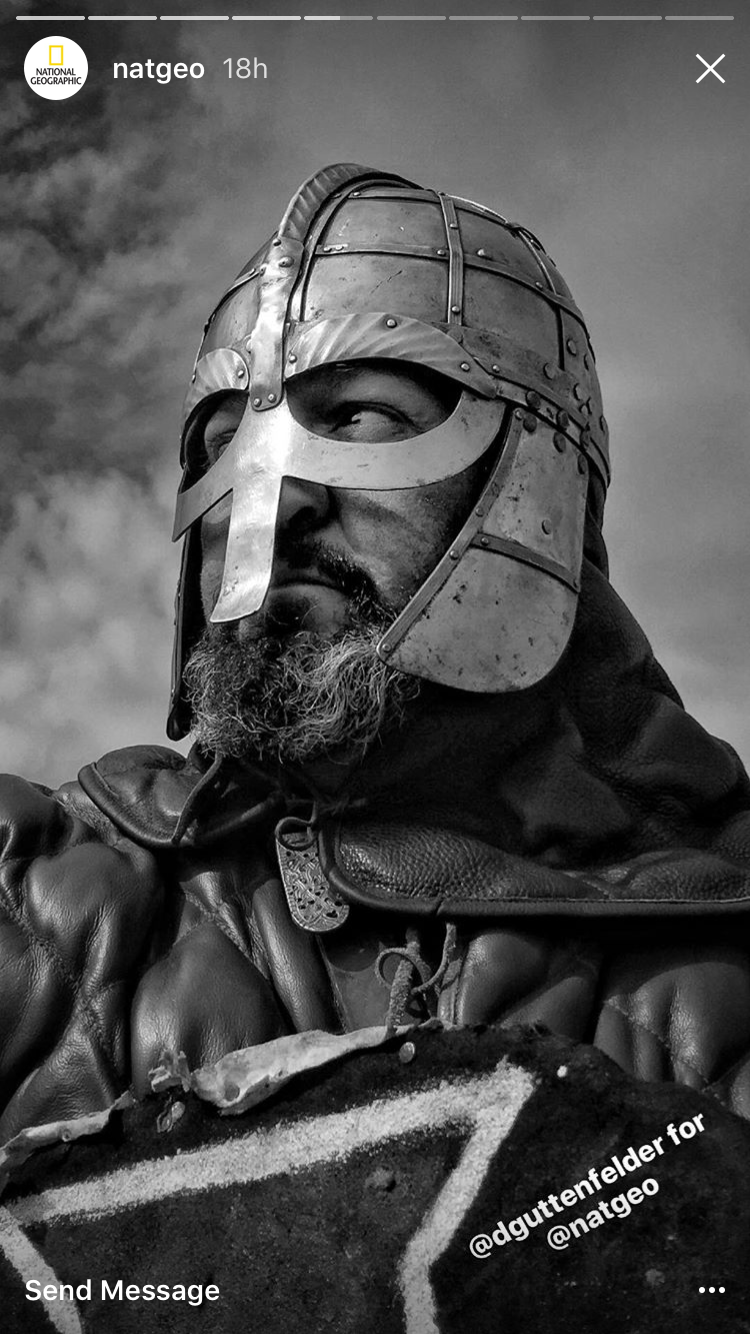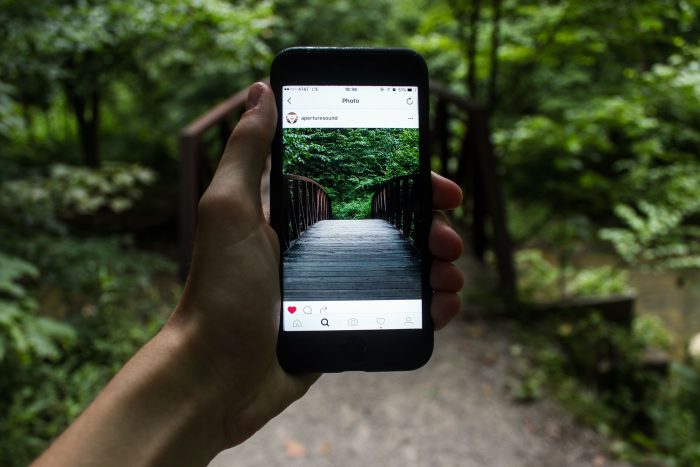The announcement of Instagram Stories last Tuesday came with mixed reviews, many considering it a
blatant ripoff of Snapchat. Allowing users to share real-time life updates, news media have a new opportunity to report from the field while also giving a behind-the-scenes glimpse of life at the publication. Snapchat and Instagram Stories differ as far as audience and ease of use, given that Instagram is predominantly used for high quality photography (often
curated after the fact). On both platforms, users can upload photographs and videos previously taken (though in Snapchat they’re framed as Memories), while Instagram only allows for media that has been shot over the last 24 hours (though screenshotting old photos gets around that). One thing that attracts the non-teen generation to Facebook and Instagram is the idea of content longevity, a gap Snapchat has attempted to
bridge.
Now with Instagram offering both long- and short-term content, newsrooms are rolling out different strategies for the two similar-but-distinct platforms. I talked with The New York Times, National Geographic, and Sports Illustrated — each known for striking photography and large Instagram followings — to understand how they are trying to make use of Instagram Stories for a new kind of visual narrative. Here, lightly edited, is what they had they say.
The New York Times
Kerri MacDonald, Times social photo editor:
We did our first story last Thursday with Doug Mills. We actually wanted to jump in pretty early, so it was an experiment.
Doug Mills is a staff photographer based in Washington, and he’s done a number of Snapchat Stories for us, so he’s pretty experienced in this kind of format. He has a great eye. He’s the sort of person we wanted to start with. He has a
great Instagram feed.
 The idea at this point, a week in: We want to keep experimenting with Instagram Stories, and we will be. We want to think of it as a slightly more visual approach than Snapchat, in a sense that we’re going to focus on our visual journalistic photographers, videographers, and reporters who have a great eye. But also try to match what we have going in the Instagram feed. We think of it as a very photographic platform. Our best photography is there, so we want to do a similar thing with Instagram Stories, but a slightly more raw approach than the photos we post on the feed itself.
The idea at this point, a week in: We want to keep experimenting with Instagram Stories, and we will be. We want to think of it as a slightly more visual approach than Snapchat, in a sense that we’re going to focus on our visual journalistic photographers, videographers, and reporters who have a great eye. But also try to match what we have going in the Instagram feed. We think of it as a very photographic platform. Our best photography is there, so we want to do a similar thing with Instagram Stories, but a slightly more raw approach than the photos we post on the feed itself.
Cynthia Collins, Times social media editor:
We’ve only done one, so we still want to evolve our strategy as we learn more as we go. For now, we’re anticipating that Snapchat will be our platform to be a bit more raw, a bit chattier — a bit looser than what we’re doing on Instagram Stories. Instagram is the place for our best photojournalism and we want those Stories to match what we’ve established over the past couple of years from our main account. We think there will be a slightly different way that our stories will be presented across Snapchat and Instagram. Instagram will be mostly our Pulitzer-winning photographers and videographers. Snapchat, we turn that over to reporters in the field. It’s a bit looser. That’s the difference we’re seeing right now. We’re trying to make Instagram Stories a different aesthetic than what we have on Snapchat.
National Geographic
Patrick Witty, National Geographic deputy director of photography:
Last week, Instagram made this announcement, and we were instantly really excited. We have an
enormous community and following on Instagram [57 million followers!] and the ability to expand our storytelling. We instantly found a photographer that was in the field:
David Guttenfelder, who has his own
huge following on Instagram and has done a lot. He’s been on our Snapchat account, our Facebook Live, and has been posting to our Instagram account for a while now. He was game to give it a shot.
 He downloaded it and tested it on his own account, and then took it over from Wolin, Poland, on Friday, where he was photographing a Viking festival, Viking reenactment battles — capturing these reenactments from the Middle Ages. It was the perfect opportunity for David to use Stories. The response has been overwhelming.
He downloaded it and tested it on his own account, and then took it over from Wolin, Poland, on Friday, where he was photographing a Viking festival, Viking reenactment battles — capturing these reenactments from the Middle Ages. It was the perfect opportunity for David to use Stories. The response has been overwhelming.
One of the interesting thing about Stories as well is that photographers are able to tell stories beyond just one picture. It gets deeper and behind the scenes of what it’s like to be a National Geographic photographer. With David, we post one or two pictures on the Nat Geo feed that are still photographs, but he was able to expand his storytelling into videos and interviews and portraiture. More than he could do with a single picture on the feed.
Rajiv Mody, National Geographic vice president of social media:
I think for us, we really see the narrative. When our photographers are out in the field, we give them access to both platforms to be able to tell stories in the best ways that they possibly can. It’s not about necessarily seeing them as distinct at this point because we’re still learning about both and what works. At this point, it’s just a great way to tell stories even better.
Sports Illustrated
Collin Orcutt, editor, Sports Illustrated digital and video:
It fell in with the time that we were gearing up for Olympics anyway. It was announced last Tuesday morning, and the following day I scheduled a meeting with our social and video staff to talk about our Olympics plan. We decided that this was a platform that we should try a few things on. SI is one of the few places that sent some really top-notch photographers over there to Rio to capture a lot of really cool images.
 Our plan became using Snapchat for a more raw on the ground feel, and looking at what our SI reporters or people are seeing or doing. Because you can upload photos from the last 24 hours on Stories we thought it would be a great chance to give a daily scrapbook of the photos that we’re capturing. There are only so many you can surface on the site, so we’ve been trying to think of ways of how we can utilize those photos that would be creative. We decided that at the end of every day we would take 10 to 15 of the day’s best images, as selected by the photo editors, format those for vertical, and share them on Instagram Stories. We’re giving people, when they wake up in the morning or wherever they visit, a quick 30- to 45-second look at whatever SI thought were the best images of the past day.
Our plan became using Snapchat for a more raw on the ground feel, and looking at what our SI reporters or people are seeing or doing. Because you can upload photos from the last 24 hours on Stories we thought it would be a great chance to give a daily scrapbook of the photos that we’re capturing. There are only so many you can surface on the site, so we’ve been trying to think of ways of how we can utilize those photos that would be creative. We decided that at the end of every day we would take 10 to 15 of the day’s best images, as selected by the photo editors, format those for vertical, and share them on Instagram Stories. We’re giving people, when they wake up in the morning or wherever they visit, a quick 30- to 45-second look at whatever SI thought were the best images of the past day.
There are a lot of sports that look better vertical. I started working in video, and I remember with all of the videos that I was cutting — back when I was still editing — basketball was always a really hard sport, because so much of that action is vertical. It’s a challenge in the same way fitting anything into a magazine is. The cover’s always gotta be vertical. The spreads are a little bit different. I actually think the format in a strange way fits the way our editors have always fit photos into magazines. So it may be an easier transition for us than other places.
Photo by
Jeremy Levin used under a Creative Commons license.

 The idea at this point, a week in: We want to keep experimenting with Instagram Stories, and we will be. We want to think of it as a slightly more visual approach than Snapchat, in a sense that we’re going to focus on our visual journalistic photographers, videographers, and reporters who have a great eye. But also try to match what we have going in the Instagram feed. We think of it as a very photographic platform. Our best photography is there, so we want to do a similar thing with Instagram Stories, but a slightly more raw approach than the photos we post on the feed itself.
The idea at this point, a week in: We want to keep experimenting with Instagram Stories, and we will be. We want to think of it as a slightly more visual approach than Snapchat, in a sense that we’re going to focus on our visual journalistic photographers, videographers, and reporters who have a great eye. But also try to match what we have going in the Instagram feed. We think of it as a very photographic platform. Our best photography is there, so we want to do a similar thing with Instagram Stories, but a slightly more raw approach than the photos we post on the feed itself. He downloaded it and tested it on his own account, and then took it over from Wolin, Poland, on Friday, where he was photographing a Viking festival, Viking reenactment battles — capturing these reenactments from the Middle Ages. It was the perfect opportunity for David to use Stories. The response has been overwhelming.
He downloaded it and tested it on his own account, and then took it over from Wolin, Poland, on Friday, where he was photographing a Viking festival, Viking reenactment battles — capturing these reenactments from the Middle Ages. It was the perfect opportunity for David to use Stories. The response has been overwhelming. Our plan became using Snapchat for a more raw on the ground feel, and looking at what our SI reporters or people are seeing or doing. Because you can upload photos from the last 24 hours on Stories we thought it would be a great chance to give a daily scrapbook of the photos that we’re capturing. There are only so many you can surface on the site, so we’ve been trying to think of ways of how we can utilize those photos that would be creative. We decided that at the end of every day we would take 10 to 15 of the day’s best images, as selected by the photo editors, format those for vertical, and share them on Instagram Stories. We’re giving people, when they wake up in the morning or wherever they visit, a quick 30- to 45-second look at whatever SI thought were the best images of the past day.
Our plan became using Snapchat for a more raw on the ground feel, and looking at what our SI reporters or people are seeing or doing. Because you can upload photos from the last 24 hours on Stories we thought it would be a great chance to give a daily scrapbook of the photos that we’re capturing. There are only so many you can surface on the site, so we’ve been trying to think of ways of how we can utilize those photos that would be creative. We decided that at the end of every day we would take 10 to 15 of the day’s best images, as selected by the photo editors, format those for vertical, and share them on Instagram Stories. We’re giving people, when they wake up in the morning or wherever they visit, a quick 30- to 45-second look at whatever SI thought were the best images of the past day.